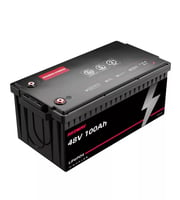Introduction: When it comes to powering various applications, from automotive to renewable energy...
A Comprehensive Guide to Car Battery Maintenance
Introduction
Car battery maintenance is essential for ensuring the longevity and proper functioning of your vehicle. Neglecting battery care can lead to performance issues and even premature failure, leaving you stranded when you least expect it. Fortunately, there are simple and cost-effective ways to maintain your car battery, one of which involves using baking soda. Now we will understand How To Use Baking Soda For Car Battery Maintenance.

Understanding the Role of Baking Soda in Battery Maintenance
Baking soda, also known as sodium bicarbonate, is a versatile household product with various applications, including cleaning and neutralizing acids. When it comes to car battery maintenance, baking soda can help remove corrosion from terminals, neutralize battery acid, and extend the life of your battery.
Safety Precautions Before Using Baking Soda
Before you begin the battery maintenance process, it's crucial to prioritize safety. Here are some essential precautions to follow:
- Wear protective gear: Always wear gloves and safety goggles to protect your hands and eyes from battery acid and cleaning solutions.
- Work in a well-ventilated area: Perform the maintenance in a well-ventilated space to avoid inhaling any fumes from the battery.
- Disconnect the battery: Prior to cleaning, disconnect the battery terminals to prevent accidental electrical shocks.
How to Use Baking Soda for Cleaning Battery Terminals
Preparing the Baking Soda Solution
- Gather materials: You will need baking soda, water, a small container, and a soft-bristled brush.
- Mix the solution: In the container, mix three tablespoons of baking soda with one cup of water to create a paste-like consistency.
Applying the Solution to the Terminals
- Dip the brush: Dip the brush into the baking soda solution, ensuring it's saturated but not dripping.
- Apply to terminals: Gently scrub the battery terminals with the solution, focusing on areas with visible corrosion.
Cleaning the Terminals with a Brush
- Scrub gently: Use the brush to remove corrosion from the terminals, applying gentle pressure to avoid damaging the metal.
- Rinse with water: After scrubbing, rinse the terminals with clean water to remove any remaining baking soda residue.
Neutralizing Battery Acid with Baking Soda
In addition to cleaning terminals, baking soda can neutralize battery acid spills. If you notice any acid leaks or spills on the battery tray or surrounding areas, sprinkle baking soda over the affected areas to neutralize the acid and prevent corrosion.
Cleaning Battery Corrosion with Baking Soda
Battery corrosion, often seen as white or bluish-green deposits on terminals, can hinder electrical conductivity and lead to battery failure. Baking soda effectively neutralizes the acidic corrosion, making it easier to clean and preventing further damage to the terminals.
Testing the Battery After Maintenance
After cleaning and neutralizing with baking soda, reconnect the battery terminals and perform a voltage test to ensure proper functionality. If the battery voltage is within the recommended range, you can rest assured that your maintenance efforts have been successful.
How Often Should You Use Baking Soda for Car Battery Maintenance?
The frequency of battery maintenance depends on various factors, including climate, driving habits, and the age of the battery. As a general rule of thumb, it's advisable to inspect and clean the battery terminals every three to six months or whenever you notice signs of corrosion or acid buildup.
Other Maintenance Tips for Extending Battery Life
- Keep the battery secure: Ensure that the battery is securely mounted in its tray to prevent vibrations that can lead to internal damage.
- Limit short trips: Short trips and frequent starts can put a strain on the battery, so try to combine errands and avoid unnecessary stops.
- Avoid overcharging: Overcharging can damage the battery, so invest in a quality charger with automatic shutoff features to prevent overcharging.
Conclusion
Regular maintenance is key to extending the life of your car battery and avoiding unexpected breakdowns. By incorporating baking soda into your maintenance routine, you can effectively clean terminals, neutralize acid spills, and prolong the life of your battery, ensuring reliable performance for years to come.
FAQs
-
Can I use baking powder instead of baking soda for car battery maintenance?
While both baking soda and baking powder contain sodium bicarbonate, baking soda is the preferred choice for battery maintenance due to its purity and effectiveness.
-
Is it safe to use baking soda on a sealed car battery?
Yes, it's safe to use baking soda on a sealed car battery to clean terminals and neutralize spills. However, exercise caution and avoid getting the solution inside the battery vents. -
Will baking soda damage my car's paint?
Baking soda is generally safe for use on car surfaces, but prolonged exposure may cause damage to paint or finishes. Rinse thoroughly after use and avoid allowing the solution to sit on painted surfaces for an extended period. -
Can I use baking soda to revive a dead car battery?
Baking soda is not a miracle solution for reviving dead car batteries. If your battery is dead, it may need to be replaced or recharged using professional equipment. -
How long does it take for baking soda to neutralize battery acid?
The time it takes for baking soda to neutralize battery acid depends on the severity of the spill. In most cases, you'll notice a fizzing reaction immediately upon contact, indicating that the neutralization process has begun.


